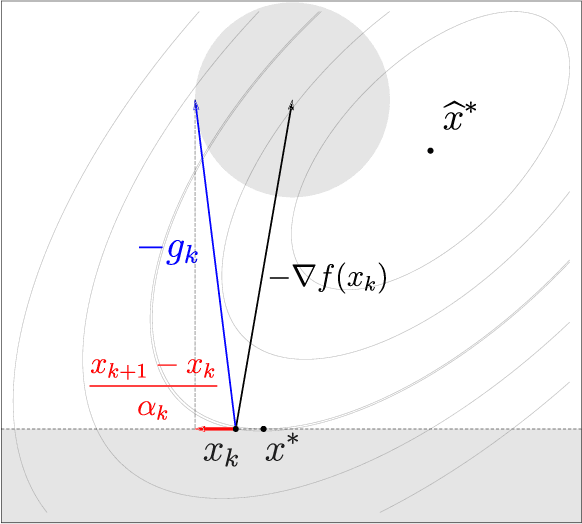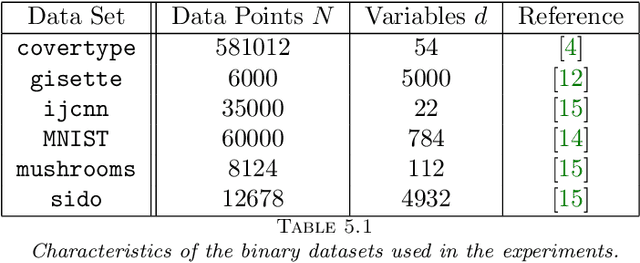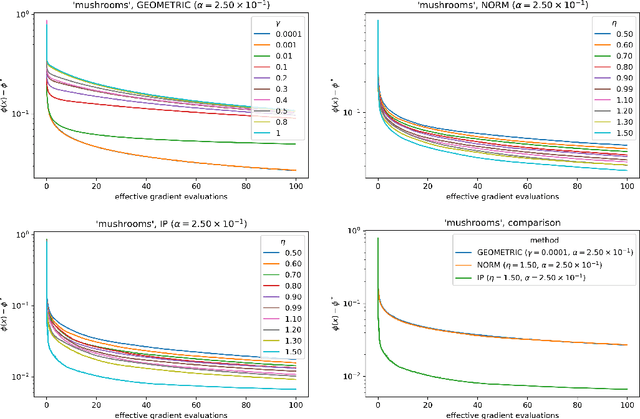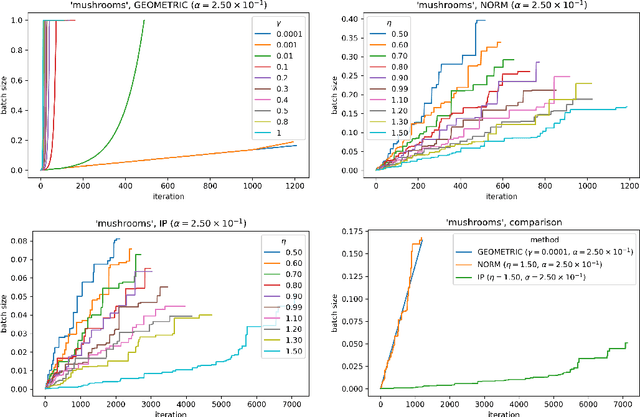Yuchen Xie
EgoLoc: A Generalizable Solution for Temporal Interaction Localization in Egocentric Videos
Aug 17, 2025Abstract:Analyzing hand-object interaction in egocentric vision facilitates VR/AR applications and human-robot policy transfer. Existing research has mostly focused on modeling the behavior paradigm of interactive actions (i.e., ``how to interact''). However, the more challenging and fine-grained problem of capturing the critical moments of contact and separation between the hand and the target object (i.e., ``when to interact'') is still underexplored, which is crucial for immersive interactive experiences in mixed reality and robotic motion planning. Therefore, we formulate this problem as temporal interaction localization (TIL). Some recent works extract semantic masks as TIL references, but suffer from inaccurate object grounding and cluttered scenarios. Although current temporal action localization (TAL) methods perform well in detecting verb-noun action segments, they rely on category annotations during training and exhibit limited precision in localizing hand-object contact/separation moments. To address these issues, we propose a novel zero-shot approach dubbed EgoLoc to localize hand-object contact and separation timestamps in egocentric videos. EgoLoc introduces hand-dynamics-guided sampling to generate high-quality visual prompts. It exploits the vision-language model to identify contact/separation attributes, localize specific timestamps, and provide closed-loop feedback for further refinement. EgoLoc eliminates the need for object masks and verb-noun taxonomies, leading to generalizable zero-shot implementation. Comprehensive experiments on the public dataset and our novel benchmarks demonstrate that EgoLoc achieves plausible TIL for egocentric videos. It is also validated to effectively facilitate multiple downstream applications in egocentric vision and robotic manipulation tasks. Code and relevant data will be released at https://github.com/IRMVLab/EgoLoc.
Flash Communication: Reducing Tensor Parallelization Bottleneck for Fast Large Language Model Inference
Dec 06, 2024Abstract:The ever-increasing sizes of large language models necessitate distributed solutions for fast inference that exploit multi-dimensional parallelism, where computational loads are split across various accelerators such as GPU clusters. However, this approach often introduces significant communication overhead, especially on devices with limited bandwidth. In this paper, we introduce \emph{Flash Communication}, a novel low-bit compression technique designed to alleviate the tensor-parallelism communication bottleneck during inference. Our method substantially boosts intra-node communication speed by more than 3x and reduces the \emph{time-to-first-token} by 2x, with nearly no sacrifice in model accuracy. Extensive experiments on various up-to-date LLMs demonstrate the effectiveness of our approach.
Integer Scale: A Free Lunch for Faster Fine-grained Quantization of LLMs
May 23, 2024Abstract:We introduce Integer Scale, a novel post-training quantization scheme for large language models that effectively resolves the inference bottleneck in current fine-grained quantization approaches while maintaining similar accuracies. Integer Scale is a free lunch as it requires no extra calibration or fine-tuning which will otherwise incur additional costs. It can be used plug-and-play for most fine-grained quantization methods. Its integration results in at most 1.85x end-to-end speed boost over the original counterpart with comparable accuracy. Additionally, due to the orchestration of the proposed Integer Scale and fine-grained quantization, we resolved the quantization difficulty for Mixtral-8x7B and LLaMA-3 models with negligible performance degradation, and it comes with an end-to-end speed boost of 2.13x, and 2.31x compared with their FP16 versions respectively.
A Speed Odyssey for Deployable Quantization of LLMs
Nov 16, 2023



Abstract:The large language model era urges faster and less costly inference. Prior model compression works on LLMs tend to undertake a software-centric approach primarily focused on the simulated quantization performance. By neglecting the feasibility of deployment, these approaches are typically disabled in real practice. They used to drastically push down the quantization bit range for a reduced computation which might not be supported by the mainstream hardware, or involve sophisticated algorithms that introduce extra computation or memory access overhead. We argue that pursuing a hardware-centric approach in the construction of quantization algorithms is crucial. In this regard, we are driven to build our compression method on top of hardware awareness, eliminating impractical algorithm choices while maximizing the benefit of hardware acceleration. Our method, OdysseyLLM, comes with a novel W4A8 kernel implementation called FastGEMM and a combined recipe of quantization strategies. Extensive experiments manifest the superiority of our W4A8 method which brings the actual speed boosting up to \textbf{4$\times$} compared to Hugging Face FP16 inference and \textbf{2.23$\times$} vs. the state-of-the-art inference engine TensorRT-LLM in FP16, and \textbf{1.45$\times$} vs. TensorRT-LLM in INT8, yet without substantially harming the performance.
FPTQ: Fine-grained Post-Training Quantization for Large Language Models
Aug 30, 2023Abstract:In the era of large-scale language models, the substantial parameter size poses significant challenges for deployment. Being a prevalent compression technique, quantization has emerged as the mainstream practice to tackle this issue, which is mainly centered on two recipes W8A8 and W4A16 (i.e. weights and activations in such bit widths). In this study, we propose a novel W4A8 post-training quantization method for the available open-sourced LLMs, which combines the advantages of both two recipes. Therefore, we can leverage the benefit in the I/O utilization of 4-bit weight quantization and the acceleration due to 8-bit matrix computation. Nevertheless, the W4A8 faces notorious performance degradation. As a remedy, we involve layerwise activation quantization strategies which feature a novel logarithmic equalization for most intractable layers, and we combine them with fine-grained weight quantization. Without whistles and bells, we eliminate the necessity for further fine-tuning and obtain the state-of-the-art W4A8 quantized performance on BLOOM, LLaMA, and LLaMA-2 on standard benchmarks. We confirm that the W4A8 quantization is achievable for the deployment of large language models, fostering their wide-spreading real-world applications.
Stochastic Ratios Tracking Algorithm for Large Scale Machine Learning Problems
May 17, 2023Abstract:Many machine learning applications and tasks rely on the stochastic gradient descent (SGD) algorithm and its variants. Effective step length selection is crucial for the success of these algorithms, which has motivated the development of algorithms such as ADAM or AdaGrad. In this paper, we propose a novel algorithm for adaptive step length selection in the classical SGD framework, which can be readily adapted to other stochastic algorithms. Our proposed algorithm is inspired by traditional nonlinear optimization techniques and is supported by analytical findings. We show that under reasonable conditions, the algorithm produces step lengths in line with well-established theoretical requirements, and generates iterates that converge to a stationary neighborhood of a solution in expectation. We test the proposed algorithm on logistic regressions and deep neural networks and demonstrate that the algorithm can generate step lengths comparable to the best step length obtained from manual tuning.
Match Cutting: Finding Cuts with Smooth Visual Transitions
Oct 11, 2022



Abstract:A match cut is a transition between a pair of shots that uses similar framing, composition, or action to fluidly bring the viewer from one scene to the next. Match cuts are frequently used in film, television, and advertising. However, finding shots that work together is a highly manual and time-consuming process that can take days. We propose a modular and flexible system to efficiently find high-quality match cut candidates starting from millions of shot pairs. We annotate and release a dataset of approximately 20k labeled pairs that we use to evaluate our system, using both classification and metric learning approaches that leverage a variety of image, video, audio, and audio-visual feature extractors. In addition, we release code and embeddings for reproducing our experiments at github.com/netflix/matchcut.
Constrained and Composite Optimization via Adaptive Sampling Methods
Dec 31, 2020



Abstract:The motivation for this paper stems from the desire to develop an adaptive sampling method for solving constrained optimization problems in which the objective function is stochastic and the constraints are deterministic. The method proposed in this paper is a proximal gradient method that can also be applied to the composite optimization problem min f(x) + h(x), where f is stochastic and h is convex (but not necessarily differentiable). Adaptive sampling methods employ a mechanism for gradually improving the quality of the gradient approximation so as to keep computational cost to a minimum. The mechanism commonly employed in unconstrained optimization is no longer reliable in the constrained or composite optimization settings because it is based on pointwise decisions that cannot correctly predict the quality of the proximal gradient step. The method proposed in this paper measures the result of a complete step to determine if the gradient approximation is accurate enough; otherwise a more accurate gradient is generated and a new step is computed. Convergence results are established both for strongly convex and general convex f. Numerical experiments are presented to illustrate the practical behavior of the method.
A Theoretical Analysis of Deep Q-Learning
Jan 01, 2019Abstract:Despite the great empirical success of deep reinforcement learning, its theoretical foundation is less well understood. In this work, we make the first attempt to theoretically understand the deep Q-network (DQN) algorithm (Mnih et al., 2015) from both algorithmic and statistical perspectives. In specific, we focus on a slight simplification of DQN that fully captures its key features. Under mild assumptions, we establish the algorithmic and statistical rates of convergence for the action-value functions of the iterative policy sequence obtained by DQN. In particular, the statistical error characterizes the bias and variance that arise from approximating the action-value function using deep neural network, while the algorithmic error converges to zero at a geometric rate. As a byproduct, our analysis provides justifications for the techniques of experience replay and target network, which are crucial to the empirical success of DQN. Furthermore, as a simple extension of DQN, we propose the Minimax-DQN algorithm for zero-sum Markov game with two players. Borrowing the analysis of DQN, we also quantify the difference between the policies obtained by Minimax-DQN and the Nash equilibrium of the Markov game in terms of both the algorithmic and statistical rates of convergence.
 Add to Chrome
Add to Chrome Add to Firefox
Add to Firefox Add to Edge
Add to Edge